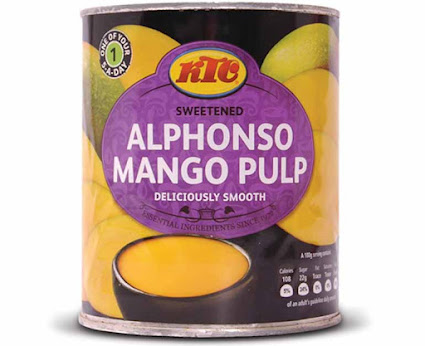Mango is basically divided into three major parts such as exocarp (11-18%), mesocarp (60-73%) and endocarp (14-22%). The fruit is a laterally compressed, fleshy drupe, containing mesocarp (mango pulp). Its edible part is pulpy, firm to tender, and has its own characteristic flavor. The mango pulp is protected by a peel which, under normal temperature and pressure conditions, ensures perfect food safety.
Pulp extraction has been found to be one of the most efficient methods of fruit preservation. Mango pulp can be consumed freshly, blended with other juice to form fruit jams or it can be evaporated to form concentrates. These products have a great potential in beverage and other food industries for export and foreign exchange earnings.
Fully matured mangoes are harvested, quickly transported to the fruit processing plant, inspected and washed. Fully ripened mango fruits are then washed, blanched, pulped, deseeded, centrifuged, homogenized, concentrated when required, thermally processed and aseptically filled maintaining sterility.
The production of pulp requires extraction of juice with the crushing of membranes of the fruit which contains juice and then processing it to make it a thick paste.
The preparation process includes cutting, destoning, refining and packing. In case of aseptic product, the pulp is sterilized and packed in aseptic bags. The refined pulp is also packed in cans, hermetically sealed and retorted. Frozen pulp is pasteurized and deep-frozen in plate freezers.
Mango pulp preservation and storage is important for the industry for converting it into various products based on market demand.
Mango pulp retains most of the nutrients of fruit and thus preferred in various food and beverage products. Studies have reported that mango pulp and peel contain high dietary fiber (DF). DF plays an important role in many physiological processes in the prevention of illnesses such as constipation, hypertension, liver cirrhosis, diabetes, cancer, and others.
Pulp is used for the production of jams, marmalades, jellys, sweets, drinks and fillings of baked goods.
Mango pulp
Mango is one of the popular fruits in the world due to its attractive color, delicious taste and excellent nutritional properties. Known for its sweet fragrance and flavor, the mango has delighted the senses for more than 4000 years. A celebrated fruit, mango, now produced in most of the tropical parts of the globe.
Wednesday, January 12, 2022
Popular Posts
-
History and Origin of Mango The mango has been known in India since very early times. It is referred to in Sanskrit literature as Amra and h...
-
This tropical fruit is high in vitamin C. Mango fruits contain 10-20 percent sugar and are important source of vitamin A. They have a rich,...
-
Uses of Mango and Nutritional Composition Mango is commonly eaten fresh and depending upon the cultivar may be consumed at an immature (unri...
-
The mango is believed to have been discovered as long as five to six thousand years in eastern India, Thailand, Myanmar, the Andaman Islands...





